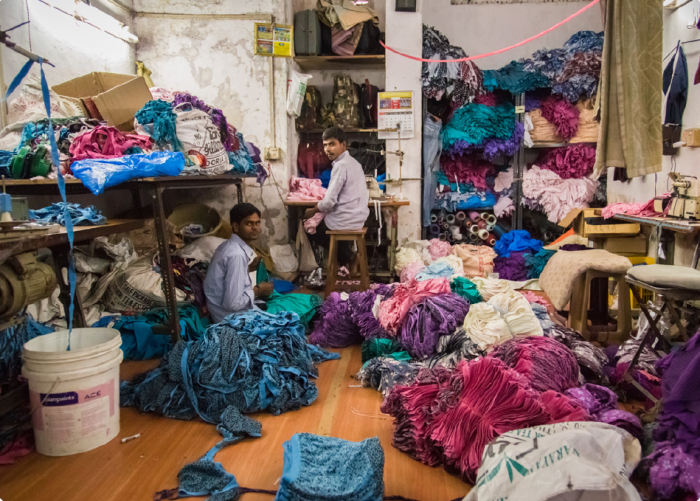
What Is Supply Chain Risk Mapping? Reducing Risk in Modern Supply Chains
As global supply chains become increasingly complex and interconnected, risks become more prominent and harder to predict. However, by creating a supply chain risk map, supply chain managers can obtain a better understanding of their network and the vulnerabilities within it, enabling them to anticipate, mitigate, and manage risks effectively.
In this article, we will delve into what supply chain risk mapping is and how to create an effective risk map.
Defining Supply Chain Risk Mapping
Supply chain risk mapping is a strategic process used by companies to identify, assess, and prioritize risks within their supply chain. Similar to a supply chain map, a risk map specifically assesses the potential weaknesses in a supply chain, identifying areas of vulnerability and potential disruption. This comprehensive tool involves creating a visual representation of the entire supply chain, offering a holistic view of possible risks at each step of the supply chain, including:
Political climates
Logistical challenges
Environmental risks
Compliance violations
Internal operational hazards
Supply chain managers create risk maps to gain a deeper understanding of the vulnerabilities in their supply chain, especially in reference to environmental, social, and governance (ESG) risks. By mapping out each node and link within your company’s network, you can pinpoint critical areas susceptible to disruptions or compliance failures, enabling you to address these disruptions when they occur or prevent them from happening at all.
How to Create Your Supply Chain Risk Map
Supply chain risk mapping can be a complicated task, but the benefits far outweigh the hassle. In today’s world of intricate networks and complex geopolitical climates, businesses cannot afford to not evaluate and predict vulnerabilities within their supply chain. Risk mapping involves several key steps that will enable you to understand your supply chain and the weak points within it.
Data Collection
To begin your supply chain risk map, thorough data collection is necessary to fully map your network, from material sources to production lines to packaging and distribution. Along with the suppliers themselves, companies must also gather comprehensive data about their suppliers’ operations, including locations, operational practices, and existing risk management strategies. This will give you deeper insight to the inner workings of your network and see how your supply chain is running at every level.
Additionally, this will improve operations within your supply chain by helping you identify redundancies, allowing for sustainability validation, enhancing efficiency, and more.
Prioritizing
Once you’ve thoroughly collected data on your supply chain, you must categorize and prioritize the risks within your system. This involves analyzing the likelihood and potential impact of various risk factors. Companies can use risk assessment frameworks and scoring systems to prioritize risks based on their severity and likelihood. For example, a primary materials supplier stationed in a country with high geopolitical tensions may have higher priority than a secondary supplier with a history of compliance violations.
Understanding the Unknown
Not every risk can be identified and prevented, so it's important to take into account unknown risks. These can include sudden catastrophes like natural disasters, breaches in cybersecurity, or global pandemics. While these factors inherently can’t be predicted, a supply chain map will enable you to identify areas that may be more susceptible to disasters and monitor them closely, increasing your response time to disruptions.
Implementing Regular Oversight
Once you have a comprehensive understanding of the vulnerabilities within your supply chain, it’s important to create a plan for monitoring these risks. Your supply chain risk map should include a schedule for regular audits and inspections throughout your supply chain, which will significantly reduce internal operational risks, such as safety hazards, compliance violations, and structural deterioration.
The supply chain landscape is dynamic, and risk maps should be regularly reviewed and adjusted to reflect changes in the market, political climate, and other relevant factors. QIMA offers services that are instrumental in creating and maintaining an effective supply chain risk map, including:
ESG Country Risk Dashboard: Gain oversight of external and internal risks within your supply chain, from carbon emissions to natural disasters.
Supplier Audits: Identify and address non-conformities for continuous improvement with thorough onsite audits, as well as training programs to educate your suppliers on your standards.
Worker Voice Programs: Gain a deeper understanding of your suppliers’ work environments with direct input from their employees.
Living Wage Gap Analysis: Ensure all workers within your supply chain earn a living wage and identify potential wage gaps within your supply chain.
Environmental Testing: Reduce environmental impacts by identifying and mitigating pollution risks.
Self-Assessment Questionnaires: Evaluate your company’s performance before audits to prepare for success.
Our global expertise in supply chain due diligence eases the hassle of creating a detailed risk map. With tools like QIMA’s compliance dashboard and expert training, supply chain managers can not only map but also continually monitor and adapt their strategies to ensure a thorough and mutable risk map.
Contact us today to learn how QIMA can help you identify and monitor vulnerabilities in your supply chain.
Or, learn more in our guide to supply chain mapping: A Step-By-Step Guide on Implementing Your ESG Risk Strategy
Related Articles


